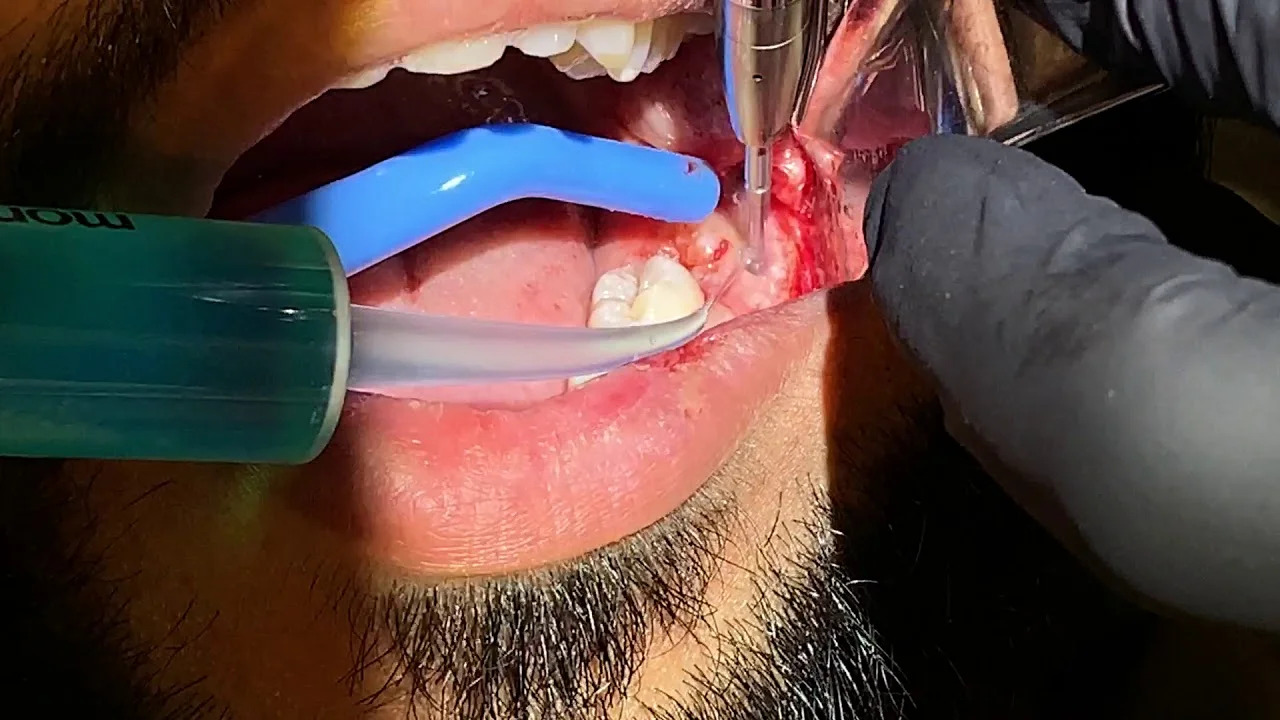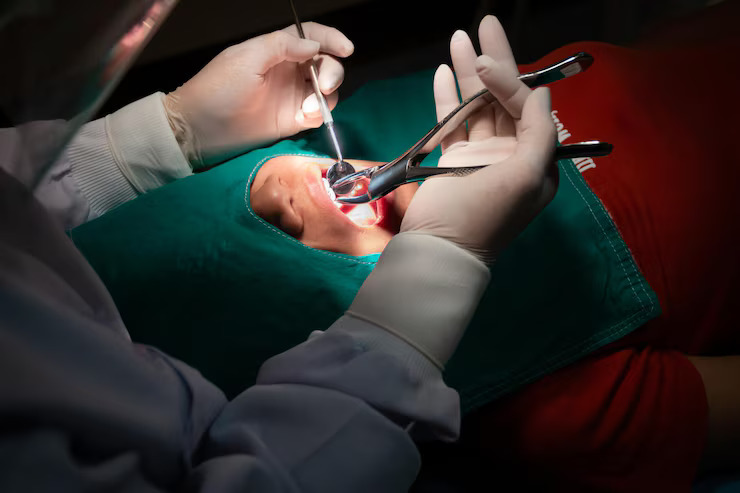Surgical Removal of Impacted Teeth are tooth removal procedures in which surgical access is required to completely remove a tooth. Even if the tooth is visible in the mouth without surgically exposing it, surgical techniques may be necessary to remove the tooth. This includes sectioning the tooth into two or more pieces, whether or not a soft tissue incision is made.
Surgical tooth extractions include removal of impacted wisdom teeth (third molars), but this does not mean that all wisdom teeth requiring removal are required to be removed surgically. Removal of a tooth is prescribed if the tooth is too extensively damaged from decay or trauma to be fixable, or if it is infected and the patient is not a candidate for endodontic (root canal) treatment.
An impacted tooth is one that does not fully emerge through the gum line. This can occur due to overcrowding, abnormal tooth angulation, or obstruction by bone or other teeth. Impacted wisdom teeth are the most common, but any tooth can become impacted.
Surgical removal becomes necessary when:

A thorough evaluation using dental X-rays or 3D scans helps assess the tooth’s position and plan the extraction.
Local anesthesia, and sometimes sedation, is administered to ensure comfort throughout the procedure.
A small incision is made in the gum to access the impacted tooth. In some cases, bone around the tooth may need to be removed.
The tooth may be sectioned into smaller pieces for easier removal.
The site is cleaned, and stitches are placed if necessary.
Guidance is provided for pain management, hygiene, and healing.

The procedure is performed under anesthesia, so you won’t feel pain. Some post-operative discomfort is normal and manageable with medication.
Most patients recover within 7 to 10 days. Full healing of the extraction site may take a few weeks.
Depending on the complexity, stitches may be placed and are usually removed or dissolve within a week.
Soft, cool foods are recommended for the first few days. Avoid straws, spicy food, and smoking during healing.
It may lead to pain, infection, decay, and damage to adjacent teeth and bone.